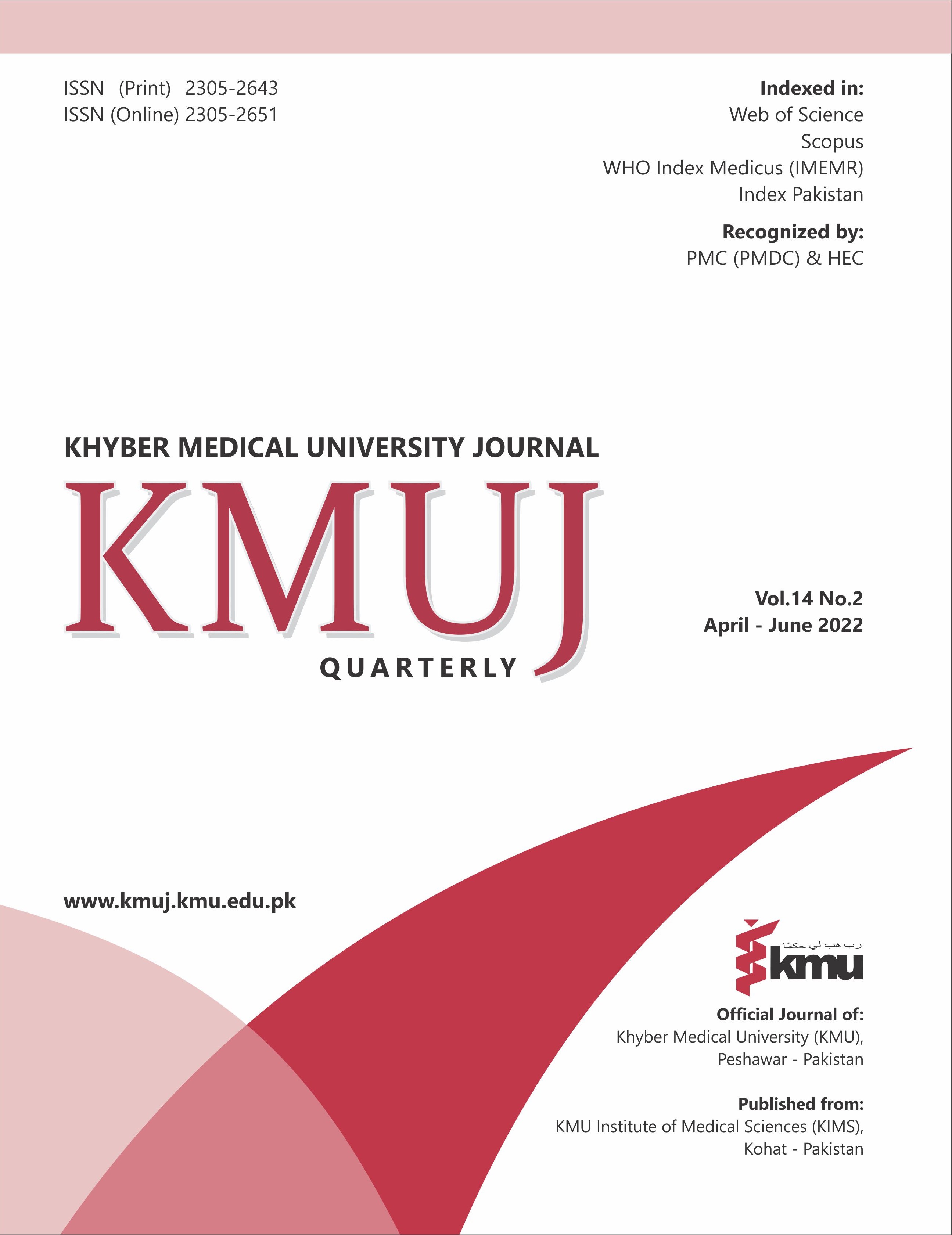OSLER – WEBER – RENDU SYNDROME: A RARE CASE OF UPPER GASTROINTESTINAL BLEEDING
Main Article Content
Abstract
BACKGROUND: Osler-Weber-Rendu syndrome (Hereditary hemorrhagic telengiectasia) cases present with recurrent epistaxis, gastrointestinal bleeding (hematemesis, melena), and arteriovenous malformations involving almost all organs of body. Internal gastrointestinal bleeding can occur from arteriovenous (telengiectasia) from stomach or small bowel.
CASE PRESENTATION: We present a case of Osler-Weber-Rendu syndrome who presented with recurrent epistaxis, melena and gross anemia (hemoglobin 3.5 gm/dL). He was admitted and transfused red cell concentrates along with intravenous fluids. His investigations including oesophagogastroscopy, colonoscopy were normal. His Computed tomography mesenteric angiography revealed 02 sites of telangiectasias. The telangiectasias were embolized and coiled resulting in successful control of melena and symptomatic improvement.
CONCLUSION: Osler-Weber-Rendu syndrome can present with gross anemia in emergency. Their management can be worrisome and challenging for both clinicians and cases of Osler-Weber-Rendu syndrome.
Article Details
Work published in KMUJ is licensed under a
Creative Commons Attribution 4.0 License
Authors are permitted and encouraged to post their work online (e.g., in institutional repositories or on their website) prior to and during the submission process, as it can lead to productive exchanges, as well as earlier and greater citation of published work.
(e.g., in institutional repositories or on their website) prior to and during the submission process, as it can lead to productive exchanges, as well as earlier and greater citation of published work.
References
Begbie ME, Wallace GMF, Shovlin CL. Hereditary hemorrhagic telengiectasia (Osler-Weber-Rendu syndrome). Postgrad Med J 2003;79:18-24.
Osler W. On a family form of recurrent epistaxis, associated with multiple telangiectasias of the skin and mucous membranes. Bulletin of the John Hopkins Hospital 1901;12:333-7.
Weber F. Multiple hereditary developmental angiomata (telangiectasias) of the skin and mucous membranes associated with recurring hemorrhages. Lancet 1907;ii:160-2.
Tortora A, Riccioni ME, Gaetani E, Ojetti V, Holleran G, Gasbarrini A. Rendu-Osler-Weber disease gastroenterologist’s perspective. Orphanet J Rare Dis 2019;14:130. https://doi.org/10.1186/s13023-019-1107-4
Juares AJC, Rafael A, Aringa D, Nardi JC, Kobari K, Rodrigues VLM, et al. Rendu-Osler-weber syndrome; Case report and literature review. Rev Brazil Otorhinolaryngol 2008;74(3):452-7. https://doi.org/10.1016/S1808-8694(15)30582-6
Pau H, Carney AS, Murty GE. Hereditary hemorrhagic telengiectasia (Osler-Weber-Rendu syndrome): otorhinilaryngological manifestations. Clin Otolaryngol 2001;26:93-8. https://doi.org/10.1046/j.1365-2273.2001.00442.x
Canzonieri C, Centenara L, Ornati F, Pagella F, Matti E, Alvisi C et al. Endoscopic evaluation of gastrointestinal tract in patients with hereditary hemorrhagic telengiectasia and correlation with their genotypes. Genet Med 2014;16:3-10. https://doi.org/10.1038/gim.2013.62
Proctor DD, Dziura JD, Longacre AV, White RI. Enterosciopicevaluation of gastrointestinal tract in symptomatic patients with hereditary hemorrhagic telengiectasia. J Clin Gastroenterol 2012;18;1840. https://doi.org/10.1097/01.mcg.0000150193.15978.f9
Karlsson T, Cherif H. Effect of intravenous iron supplementation on iron stores in non-anemic iron-deficient patients with hereditary hemorrhagic telengiectasia. Hematol Rep 2016;8(1):6348. https://doi.org/10.4081/hr.2016.6348
Sato Y, Takayama T, Takahari D, Sagawa T, Sato T, Abe S et al. Successful treatment ofor gastrointestinal bleeding of Osler-weber-Rendu disease by Argon Plasma coagulation using double-balloon enteroscopy. Endoscopy 2008;40:E228-9. https://doi.org/10.1055/s-2007-966562
Houghton KD, Umar B, Schairer J. Successful treatment of hereditary hemorrhagic telengiectasis with Octeriotide. ACG Case Rep J 2019;6(6):e00088. https://doi.org/10.14309/crj.0000000000000088
